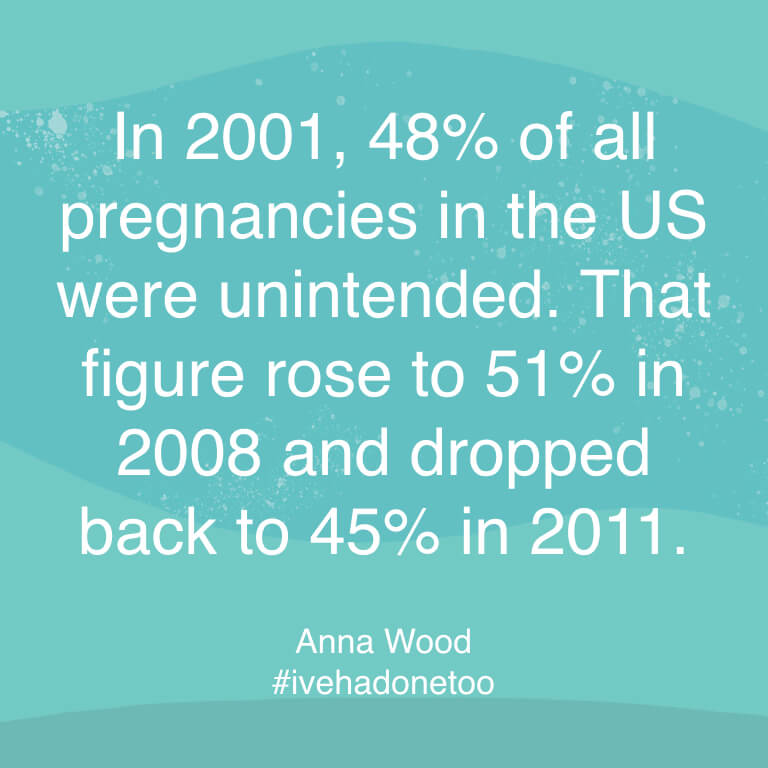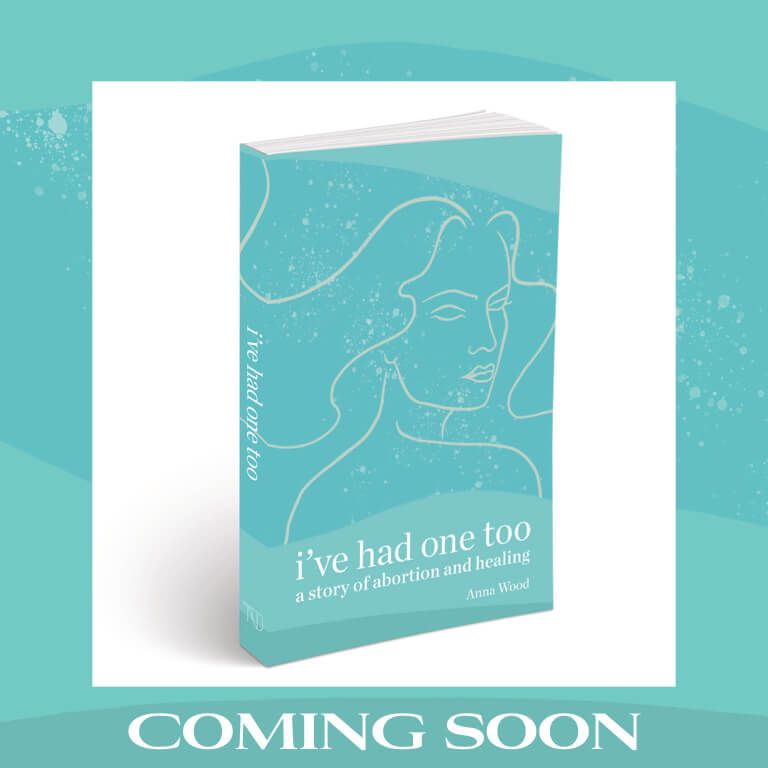As long as there are unwanted pregnancies, there will be abortions – but why does the responsibility for birth control remain firmly on women’s shoulders? asks author Anna Wood, in this excerpt from her memoir I’ve Had One Too

FAST FORWARD TO THE ONE-YEAR MARK AFTER THE ABORTION. I began to spend a lot of time thinking about the circumstances of my pregnancy and how it compared to what it might be like for other women who are trying, or not, to conceive. In the past handful of years, as many of my friends became mothers, it seemed like just as many had struggled to become pregnant. Several couples I knew had spent the GDP of a small island nation on IVF treatments. Some had even considered taking an extended leave to go to South Africa for six weeks where there are top-notch private fertility clinics. Along with the expertise of those doctors, the procedure is a fraction of the cost it is here in the US.
Listening to these stories, I felt at once great empathy for my friends, and positively treacherous for having had an abortion. I know those women would have given just about anything to get pregnant as easily as I did. I vividly remember a conversation with a friend who’d been having a particularly long and trying road to pregnancy. We were on the phone the night before she was leaving for a backpacking trip in the Tetons. She updated me about where she was at in her fertility journey, I told her stories about my new life in California, and she laughed, thank goodness you didn’t stay with the broker. Can you imagine if you guys had actually had kids together! I was silent for a beat and then went on to comment how happy I was to be away from him. A lie of omission. The first and only friend I hadn’t been honest with.
There was a knot in my stomach for the rest of our conversation. I wanted so badly to tell her what an amazing mother she’d be. I wanted to tell her how much I wanted to have a child myself, with the right man. I wanted to rage with her against the misfortune that I should have gotten pregnant at a time when she could not. I wanted to explain to her how careful I had been for 17 years, and how unfair it felt to find myself in the situation I did after one careless month. But instead, I kept my mouth shut. Maybe we would get there one day.
///
As hard as it is for some women to become pregnant, unintended pregnancies also happen all the time. In 2001, 48% of all pregnancies in the US were unintended. That figure rose to 51% in 2008 and dropped back to 45% in 2011. I was blown away when I read that. Consistently, half of all pregnancies are unintentional. Just let that sink in for a moment. When I first read this statistic, I was so overwhelmed by it that I immediately reached for my phone, who could I tell this crazy thing I just learned? In the end I didn’t call anyone but ruminated on how many lives are upended by this experience. Over time, it gave me a little perspective about my own pregnancy and eased my feeling of guilt with my friends who couldn’t conceive. Clearly, I wasn’t the only one this was happening to, and maybe, I wasn’t to blame.
In the US, there is this feeling that birth control is something we have all figured out. That it is 100% effective, and we all know how to use it correctly, and we all do that all the time. But if the preceding statistic tells us anything, it’s that birth control is not all figured out. Birth control is still considered a woman’s responsibility, but it’s a burden that we don’t always want to carry. Besides which, it doesn’t always work. The pill comes in at 91% effective (99% if taken perfectly, though most women fall short of that), the shot 94% effective, and IUDs and sterilization are still not perfect—both are 99% effective.
The other staggering number to take into consideration in all of this, is that women tend to live at the intersection of being both sexually active and fertile for a full 30 years. As a woman, you worry about pregnancy from the time of your first sexual encounter until menopause. Your options should you become pregnant—motherhood or abortion—are weighty enough without the added stigma around ending an unplanned and/or unwanted pregnancy.
What toll does that level of subconscious worry take? One time in college, I received a failing grade on a Physics exam. I was devastated, and immediately set up an appointment with the professor to see what we could do about my future in the class. At that point in my life, school was everything, and the thought of not passing a class was unbearable. In the four days I had to wait before our appointment, I was a wreck—anxious, unable to focus, and with absolutely no appetite. When you have that much strain on you, it can become difficult to complete even the simplest tasks. There is a lot I want to do in this life, a lot that I think needs to be done. But how much of the time do we spend preoccupied with the question: what happens if I get pregnant? How much of my energy and focus was caught up with this worry? Women represent 50% of the population. Imagine how much collective headspace we could free up if birth control was not our sole responsibility, and if abortion was not so taboo.
///
As for the broker and I, we responsibly used condoms for the first several months of our relationship—it wasn’t like we threw caution to the wind immediately. But one night, he asked if we could skip it just this once. The conversation came up in bed, as he was getting frisky with me. It made me uneasy. He promised that he knew his body well and that he wouldn’t mess it up. I held off that first night, but as the topic came up again I eventually relented. The first time he pulled out, it was nerve wracking, but it seemed to go well. The next time I was a bit more relaxed about the whole thing, and it was then that he changed the rules of the game—he surprised me at the last second by coming inside me. I ran to the bathroom in a panic. When I returned to the bedroom I rocked back and forth on the edge of the bed, feeling the beginnings of anxiety prickling my skin. I’ve always been quite high strung, the broker in every way my opposite. He grew up in a small beach community and couldn’t be bothered to get upset about nearly anything. This was no different. He rolled onto his side to face me and said, Well baby, I guess we just rolled the dice. I retorted, We? Where was I in this decision? He laughed good-naturedly at my worry and tried to pull me into an embrace.
I can’t recall the latter part of that night. Did I sleep in his arms? My unease about the relationship was growing by then, and I often spent nights at the edge of his king-sized bed, facing the window, sleeplessly staring at the outside light spilling in around the edges of the black-out curtains. The next day I had to take a work trip, and by the time I was on the plane I had decided to take Plan B as soon as we touched down. I texted the broker to let him know. I still have a screenshot of his reply: I know I’m not always as sensitive as you want or need, I’ll work on it. I think I’m not stressed because of everyone I’ve dated I think having a child with you would be the easiest. As in I think we would agree on a lot and have similar values. So yes, I would prefer to continue to get there if we get there but an “oops” with you isn’t the end of times in my mind.” I took the pill and got on with my work.
///
I’ve Had One Too: A Story of Abortion and Healing by Anna Wood is out February 16 2021. Get your copy HERE.


